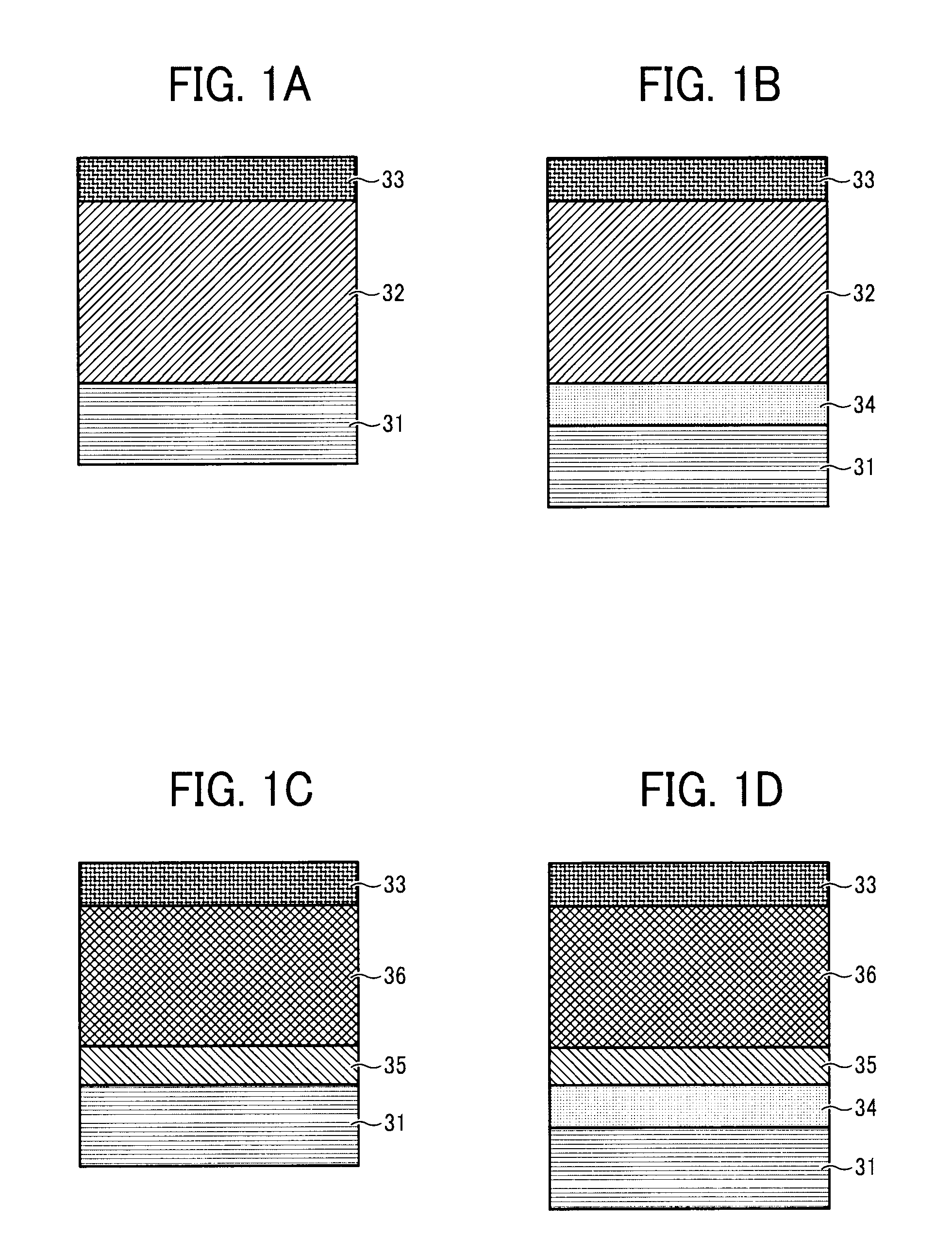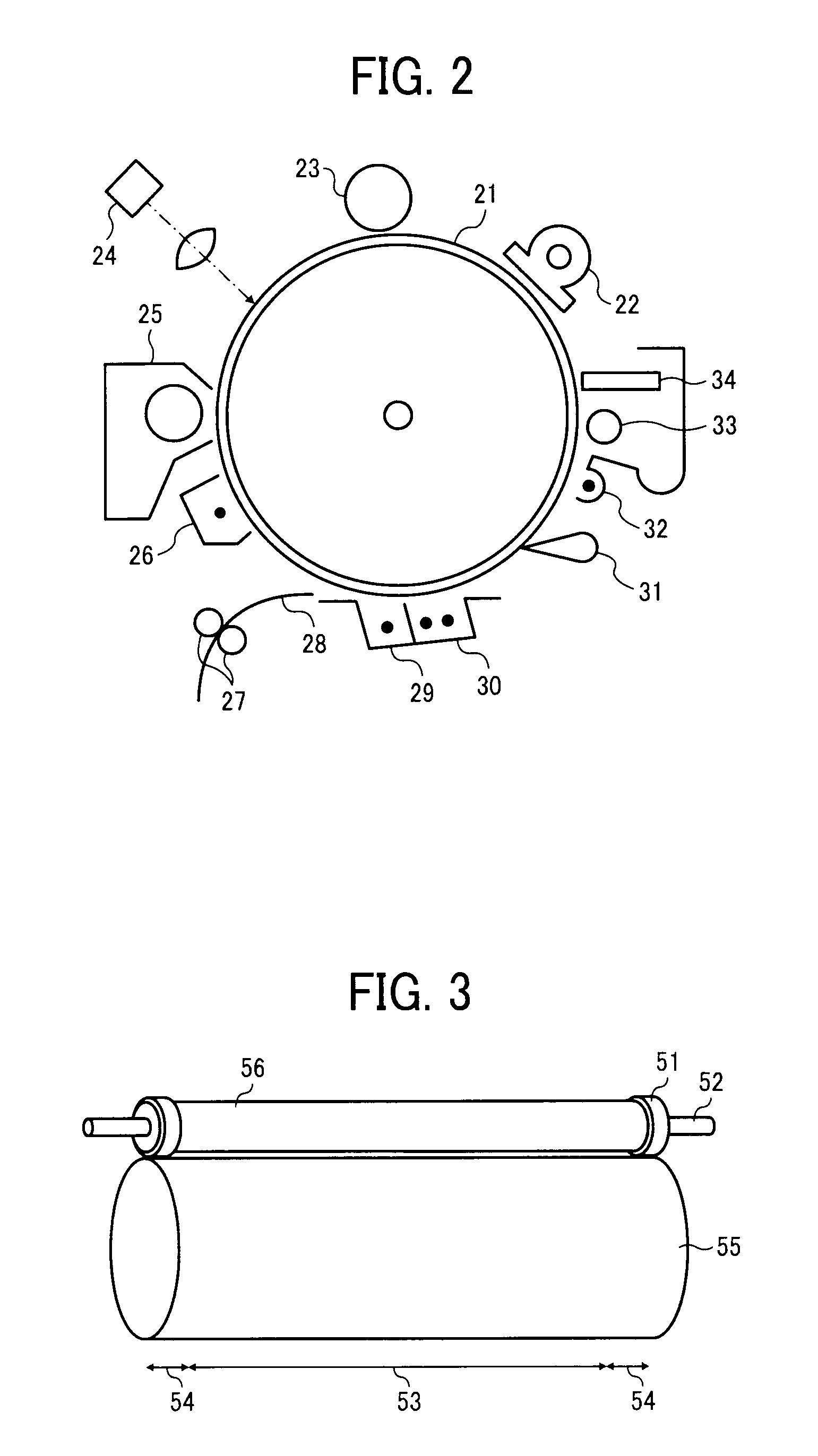Image bearing member, image forming apparatus, and process cartridge
a technology of image bearing and image forming apparatus, which is applied in the direction of electrographic process apparatus, corona discharge, instruments, etc., can solve the problems of abnormal images, photoreceptor replacement, and insufficient technology in the quick printing field, and achieves excellent durability, reduced voltage fluctuation, and high stability
- Summary
- Abstract
- Description
- Claims
- Application Information
AI Technical Summary
Benefits of technology
Problems solved by technology
Method used
Image
Examples
example 1
[0707]The liquid application for an intermediate layer, the liquid application of an undercoating layer, the liquid application of a charge generation layer, and the liquid application of a charge transport layer having the following recipes are applied to an aluminum cylinder having an outer diameter of 60 mum, in that order, by a dip coating method followed by drying in an oven to obtain an intermediate layer having a thickness of about 0.5 μm, an undercoating layer having a thickness of about 2.5 μm, a charge generation layer having a thickness of about 0.2 μm, and a charge transport layer having a thickness of about 22 μm.
[0708]The drying condition for each layer is: 130° for 10 minutes for the intermediate layer; 130° C. for 20 minutes for the undercoating layer; 90° C. for 20 minutes for the charge generation layer; and 120° C. for 20 minutes for the charge transport layer.
Liquid Application for Intermediate LayerN-methoxy methylated nylon (FR-101, 5 partsmanufactured by Namar...
example 2
[0716]The image bearing member of Example 2 is manufactured in the same manner as in Example 1 except that the diamine compound represented by the illustrated diamine compound no. 7 is changed to the diamine compound represented by the illustrated diamine compound no. 3 having a molecular weigh of 194.32.
example 3
[0717]The image bearing member of Example 2 is manufactured in the same manner as in Example 1 except that the diamine compound represented by the illustrated diamine compound no. 7 is changed to the diamine compound represented by the illustrated diamine compound no. 5 having a molecular weigh of 372.56.
PUM
 Login to View More
Login to View More Abstract
Description
Claims
Application Information
 Login to View More
Login to View More - R&D
- Intellectual Property
- Life Sciences
- Materials
- Tech Scout
- Unparalleled Data Quality
- Higher Quality Content
- 60% Fewer Hallucinations
Browse by: Latest US Patents, China's latest patents, Technical Efficacy Thesaurus, Application Domain, Technology Topic, Popular Technical Reports.
© 2025 PatSnap. All rights reserved.Legal|Privacy policy|Modern Slavery Act Transparency Statement|Sitemap|About US| Contact US: help@patsnap.com



